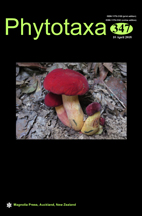Abstract
Luzon is the largest island of the Philippines, and because of its isolation from other landmasses it has developed a unique diversity of flora and fauna. Included in this rich biodiversity of flora are members of genus Begonia of the family Begoniaceae. In a joint expedition to the island, botanists from Taiwan and the Philippines found three unknown Begonia species and compared them with potentially allied species. The three species are clearly members of Begonia section Baryandra. Studies of literature, herbarium specimens, and living plants support the recognition of the three new species: Begonia droseroides, B. gabaldonensis, and B. madulidii. This brings the total of Begonia species in section Baryandra to sixty-eight, of which 85.3% are endemic to the Philippines.

